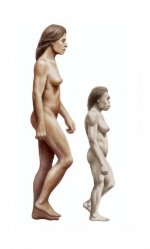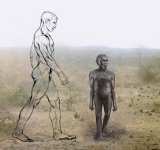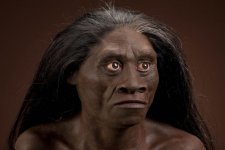arvistro
Elite member
- Messages
- 1,004
- Reaction score
- 187
- Points
- 0
I want to open this for fun and discussion since we might have there folk who knows a thing or two in mythology and those who know anthropology.
So, my point is that maybe mythological creatures such as dwarves, elves, etc, are based on stereotyped reality of ancient man.
For example, dwarves, they live in mountains, they work with metals, they have big heads, they have robust bodies.
This is about bell beakers who I recall could have been related to some metals and montains, from wiki:
Historical craniometric studies found that the Beaker people appeared to be of a different physical type than those earlier populations in the same geographic areas. They were described as tall, heavy boned and brachycephalic. (although there is a problem of bell beakers being tall, dwarves are usually seen as short).
Alpine race (mountain folk) is described as being:
...the Alpine race is thick-set and broad. The average height of the Alpine man is about 1.63 metres. This small height is brought about by the relatively short, squat legs. This broadness and shortness is repeated in all the details: in the broadness of the hand and its short fingers, in the short, broad feet, in the thick, short calves.
wiki mentions this on dwarves:
Lotte Motz theorized that the Germanic dwarfs, particularly as smiths and gatekeepers, constituted a reminiscence of the Megalithic culture in Northern Europe.
Do you think there is something to it, or is it rather wrong?
I have issues with dolichocephalic hunters (elves) who lived in forests. Maybe those actually developed from some early priest caste living in sacred groves? Or maybe elvish dolicocephalic feature is something introduced only by the Lord of the Rings and re-copied into video games from there?
So, my point is that maybe mythological creatures such as dwarves, elves, etc, are based on stereotyped reality of ancient man.
For example, dwarves, they live in mountains, they work with metals, they have big heads, they have robust bodies.
This is about bell beakers who I recall could have been related to some metals and montains, from wiki:
Historical craniometric studies found that the Beaker people appeared to be of a different physical type than those earlier populations in the same geographic areas. They were described as tall, heavy boned and brachycephalic. (although there is a problem of bell beakers being tall, dwarves are usually seen as short).
Alpine race (mountain folk) is described as being:
...the Alpine race is thick-set and broad. The average height of the Alpine man is about 1.63 metres. This small height is brought about by the relatively short, squat legs. This broadness and shortness is repeated in all the details: in the broadness of the hand and its short fingers, in the short, broad feet, in the thick, short calves.
wiki mentions this on dwarves:
Lotte Motz theorized that the Germanic dwarfs, particularly as smiths and gatekeepers, constituted a reminiscence of the Megalithic culture in Northern Europe.
Do you think there is something to it, or is it rather wrong?
I have issues with dolichocephalic hunters (elves) who lived in forests. Maybe those actually developed from some early priest caste living in sacred groves? Or maybe elvish dolicocephalic feature is something introduced only by the Lord of the Rings and re-copied into video games from there?




